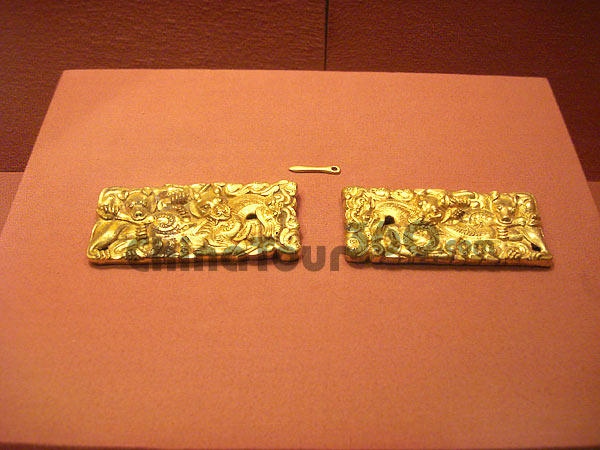
During the Han Dynasty (206 BCE - 220 CE), members of imperial family were buried in jade burial suits. These suits, once common among royal tombs, have now become rare and priceless. These suits are made by sewing pieces of jade together using threads often made of gold or silver. The most beautiful of these can be seen in Xuzhou, a city little known in the Western world.
During the early Han Dynasty, Xuzhou (then called Peng Cheng) was one of the most important regions of China. It was birthplace of the first peasant-turned emperor Liu Bang, Emperor Gaozu of Han. After uniting China under his rule, he endowed his younger brother Liu Jiao as Prince of Chu and granted him their ancestral home, Peng Cheng, as his fiefdom. All was well in Peng Cheng until the reign of Liu Wu, 3rd Prince of Chu, who was caught drinking and having sex during the mourning period for recently deceased Grand Empress Dowager Bo, mother of Emperor Wen of Han and grandmother of Emperor Jing of Han.
In a fit of rage over the disrespect for his grandmother, Emperor Jing ordered seizure of half of Liu Wu's fiefdom. This influenced Liu's decision to partake in a rebellion against the emperor with other princes later deemed the Rebellion of the Seven States. The rebellion was put down by the emperor and Liu committed suicide upon defeat to avoid capture. Fortunately for the modern generation, Liu Wu's son Liu Li was permitted to succeed the his father's fiefdom and title. Liu Li buired Liu Wu at Lion Mountain which was discovered in the mid-1990s by an archaeological team.
Spencer P.M. Harrington, associate editor of ARCHAEOLOGY, recorded that "175,000 coins, 200 official seals, 200 jade objects, weapons and some 1500 other objects made of gold silver, copper, bone and lacquer" was discovered. However, this was not the greatest treasure. The most unique find of this expedition was the Liu Wu's jade burial suit. Grave robbers have stolen much of gold thread that held the suit together leaving the jade pieces in a heap. After almost two years, 60,000 USD, 1.576 KG of gold later, the jade burial suit was placed back together.
The jade used to make the suit was exquite and it is the oldest and best made jade burial suit to have survived. 4248 pieces of jade were used in its construction and details were so exacting that jade circles were placed over the nipples while a small hole on the top for the hair to come out of. It is currently being exhibited at Xuzhou Museum in Jiangsu. Although the other exhibits discounting Liu Wu's exotic belt buckle is underwhelming compared to what could be seen in other parts of China; the jade suit is definitely alone is definitely worth the visit.
Here you can see the detailed nature of the work if you look closely at the jade pieces forming the circle
|
 |
| This is the belt buckle i was talking about; the workmanship is extradordinary |
沒有留言:
張貼留言